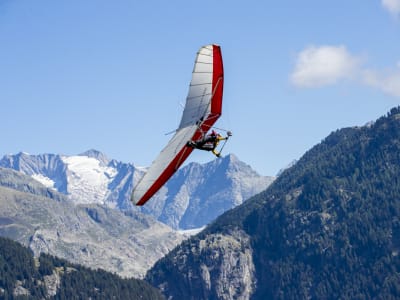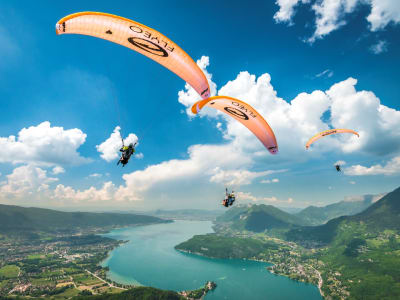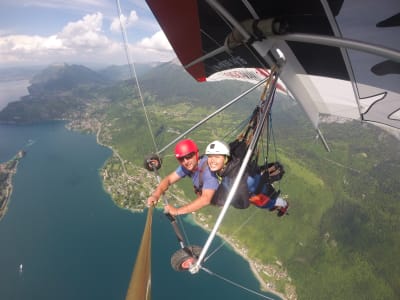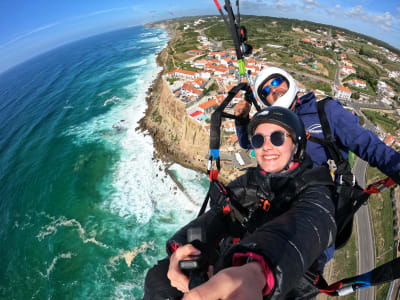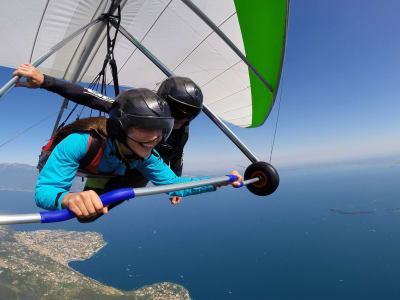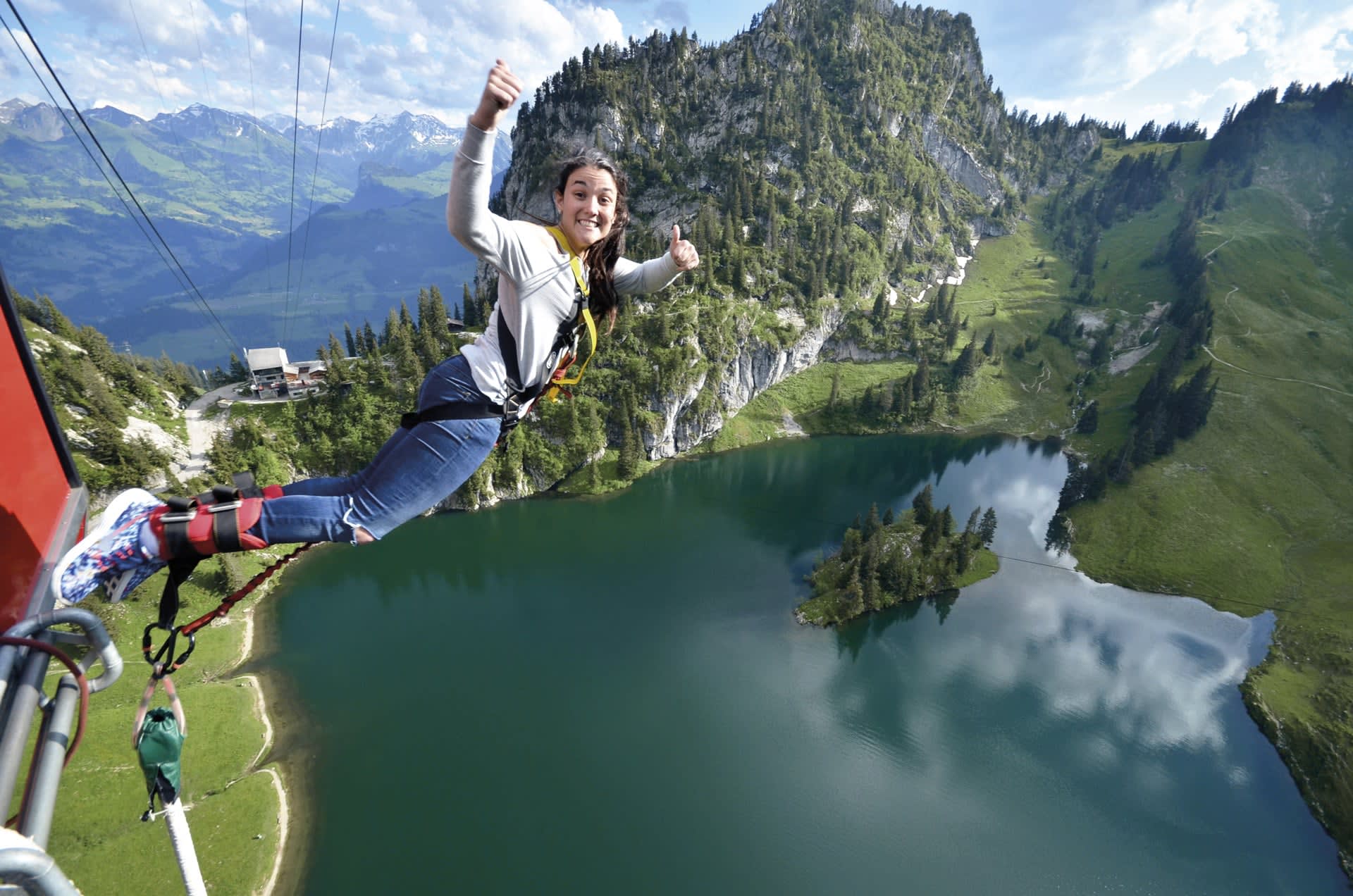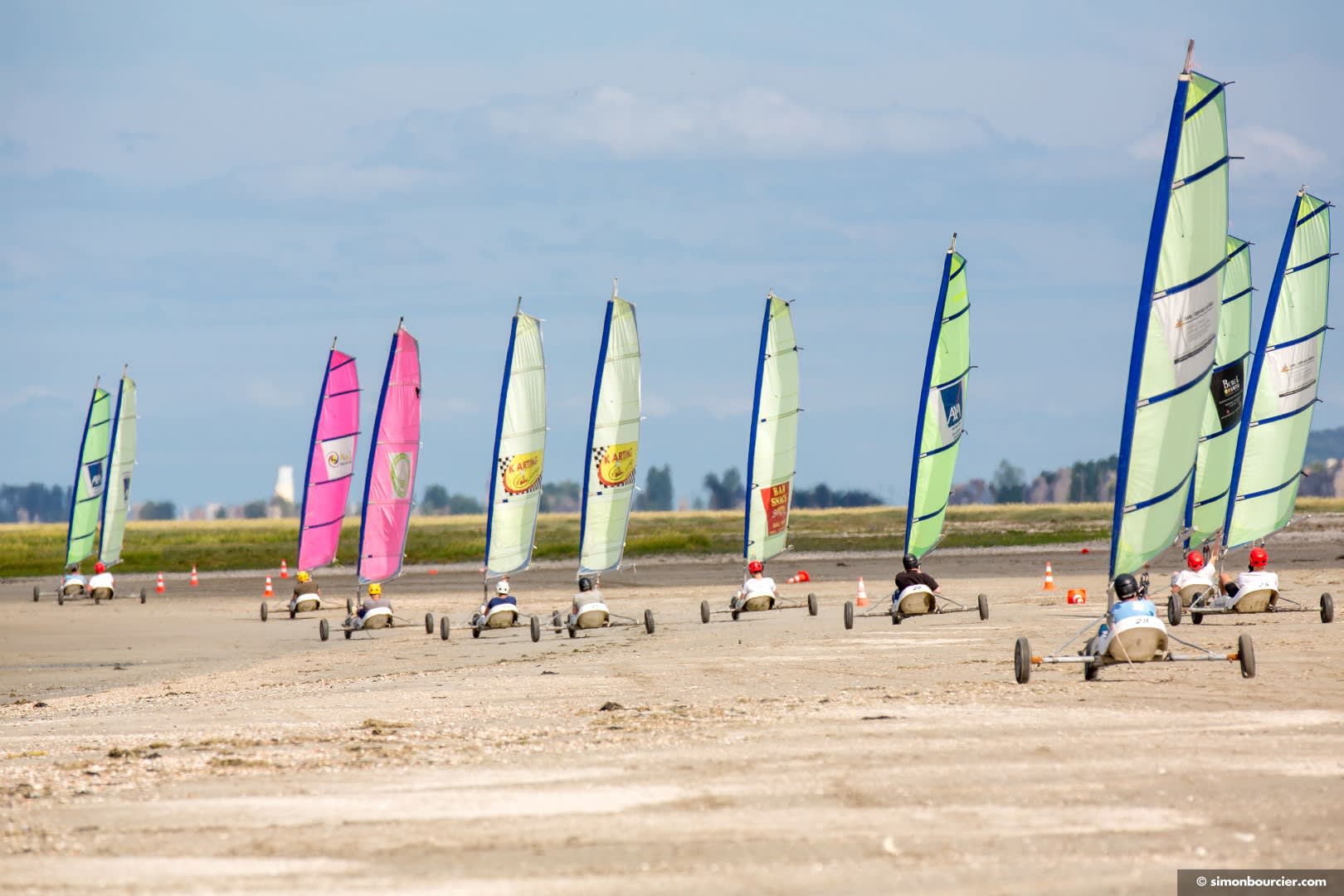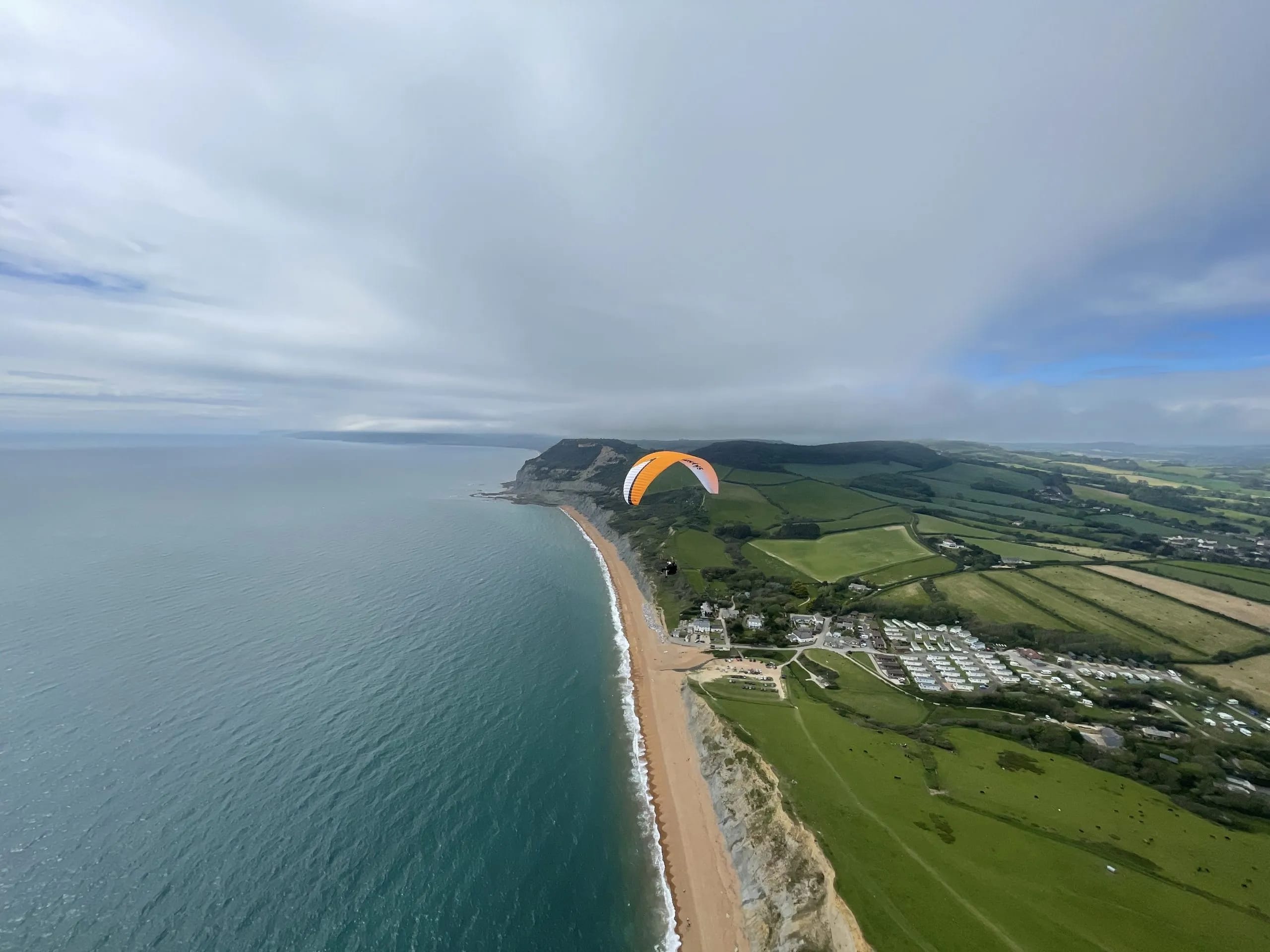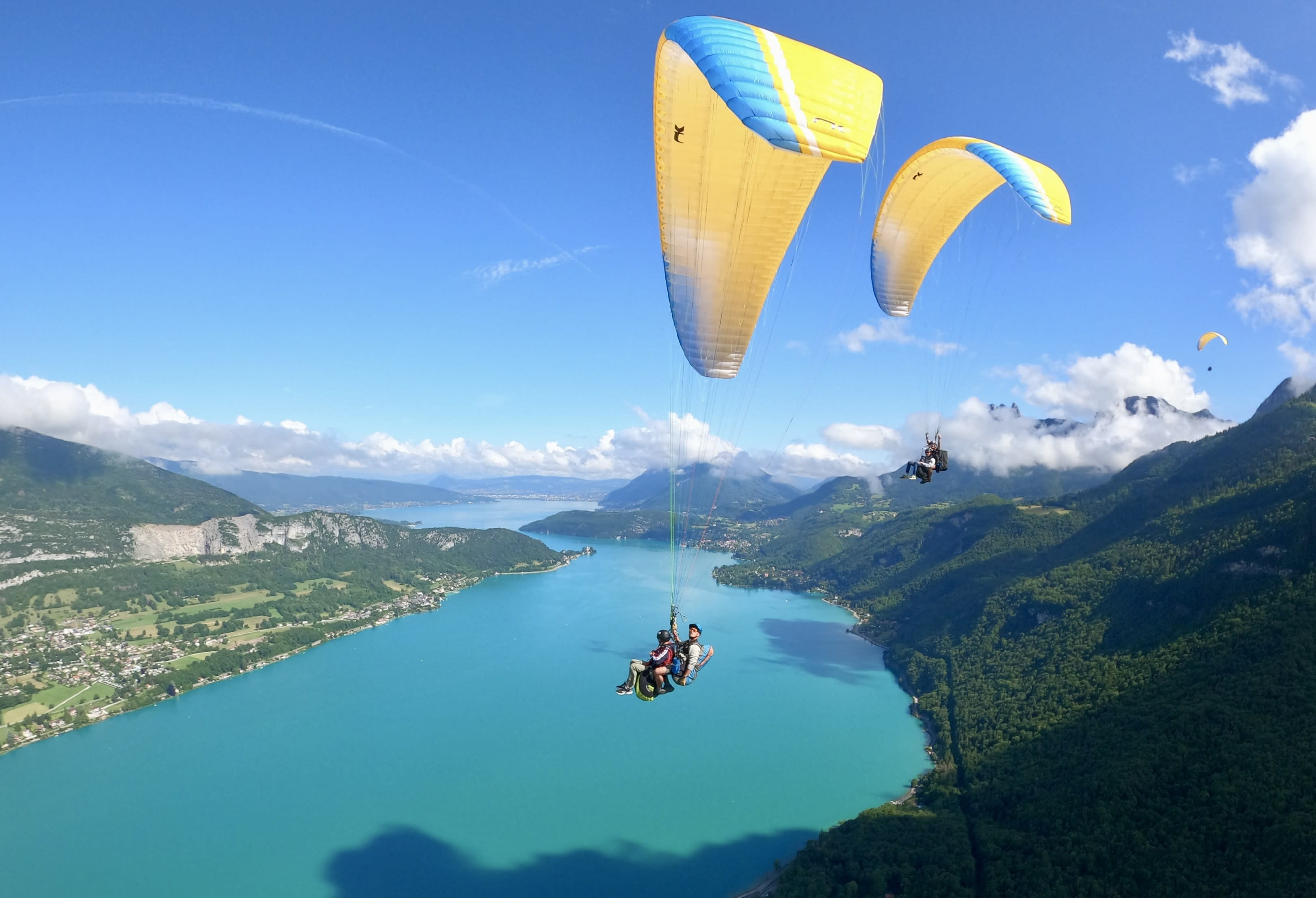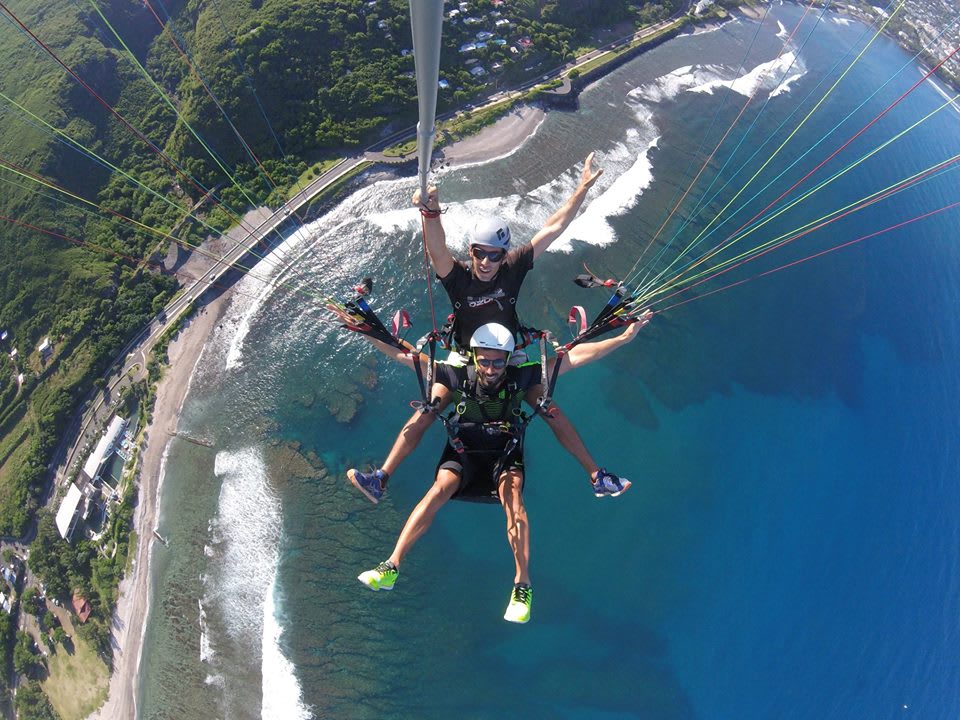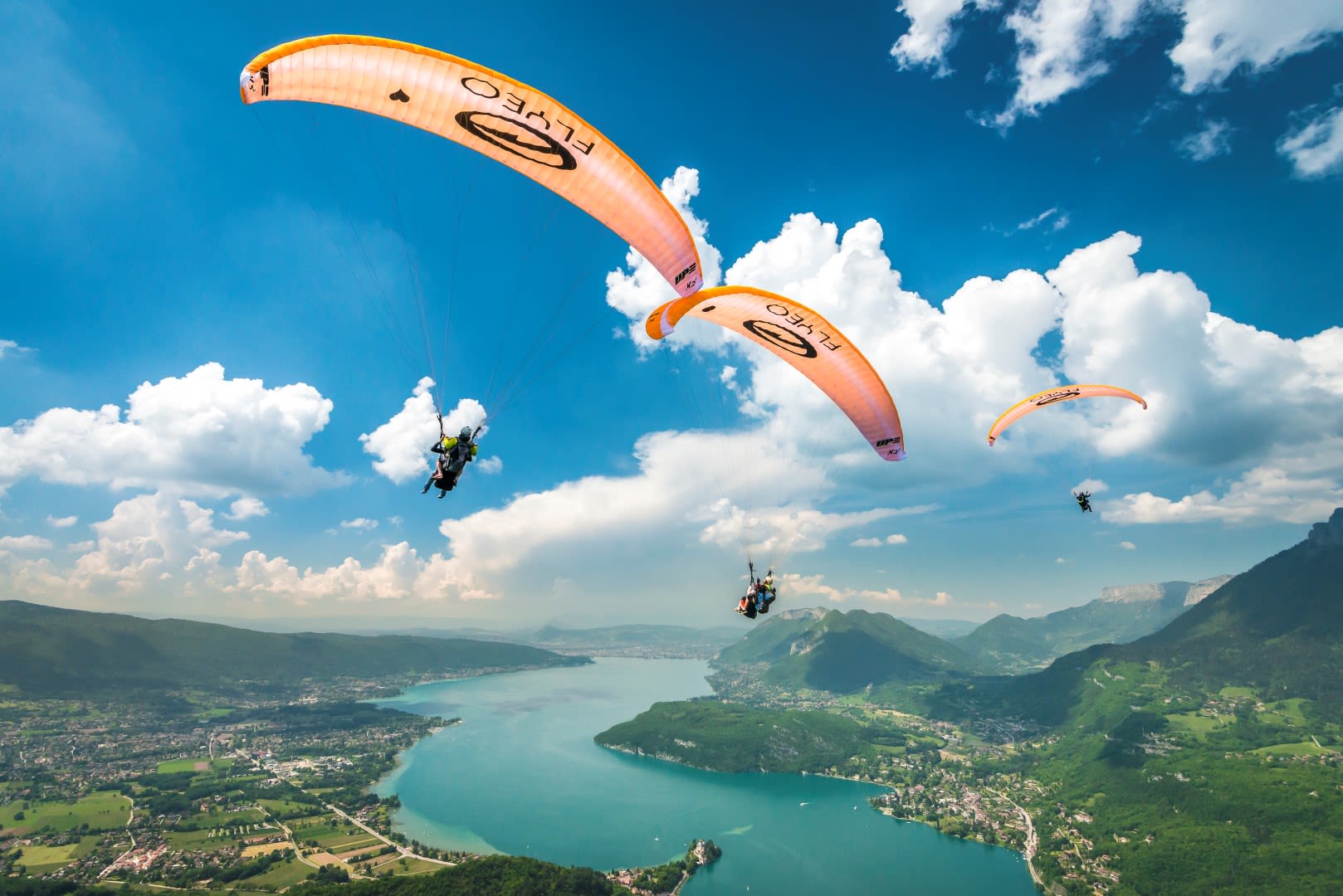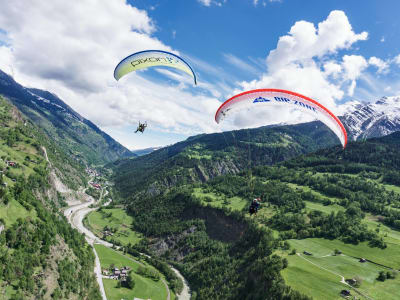
What's the Difference Between Paragliding and Hang Gliding?
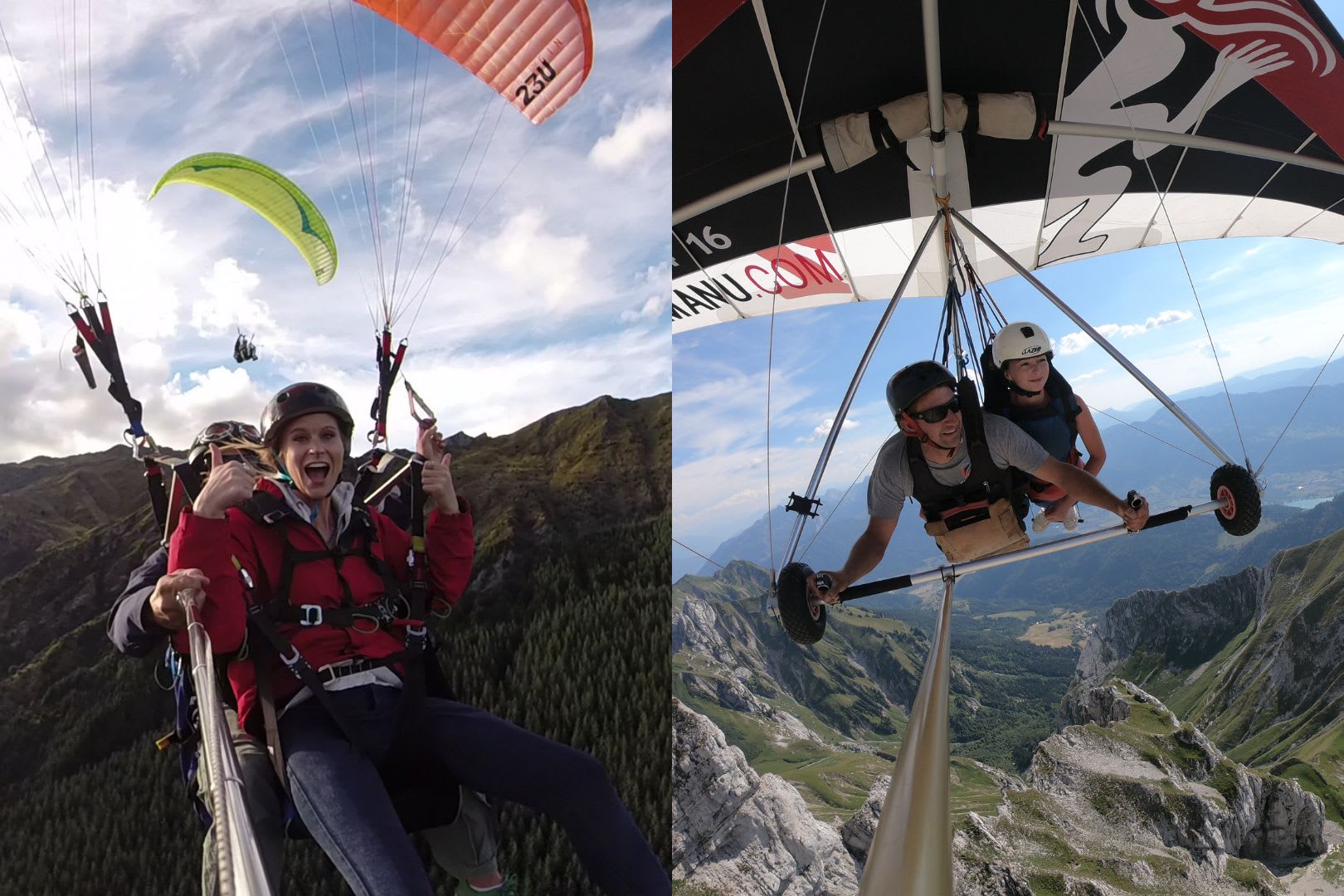
In the realm of aerial sports, where adventure meets the boundless sky, two distinct activities stand out: paragliding and hang gliding. Both offer exhilarating experiences that defy gravity and provide unmatched perspectives of the world below. As individuals seek adventure and thrill in the great outdoors, understanding the nuances between paragliding and hang gliding becomes essential.
Have you ever wondered what the difference between paragliding and hang gliding is? At first glance, they seem very similar. And it’s true that these two sports have several things in common: they are both motor-free and require air and wind to be able to fly. There are however significant differences in equipement, techniques, and overall experience.
After reading this article, you will be able to choose if paragliding is made for you or if it’s hang gliding (and in best case, both)!
Hang gliding vs. paragliding kite

The main difference between these two activities is the shape and size of their kite : this is the biggest visible difference existing between a hang glider and a paraglider. The hang glider uses a distinctive triangular shape, it is made of thick synthetic sailcloth typically in polyester and its frame is made of aluminium and other metals. Its stiff structure is composed of heavy tarpaulin stretched over a metal airframe with a triangle shape. This A-shaped frame offers improved aerodynamics and greater speed during the ride.
Paragliders, on the other hand, are simply made up of a paragliding harness hanging beneath a fabric-cell wing, whereas the shape of paraglider wings is rounder. Overall, a paraglider is similar to a parachute, even if it is slightly stronger and more rigid. The wing used for paragliding is also made of polyester (and sometimes nylon), but the structure is completely different. The ellipse-shaped wing has two layers of fabric, the upper and lower, and unlike hang gliders, there are no metallic frames.
What is the size difference of a hang glide and paraglide?
When talking about the kites, size is another important difference to take into account. Paraglides are easily transportable, and they fit into backpacks, making them a more practical choice for carrying. The hang glider, on the other hand, can't fit in a backpack due to its metallic structure. It can’t be folded so the people who usually own one strap it to the roof racks on their cars.
Hang gliding vs. paragliding position
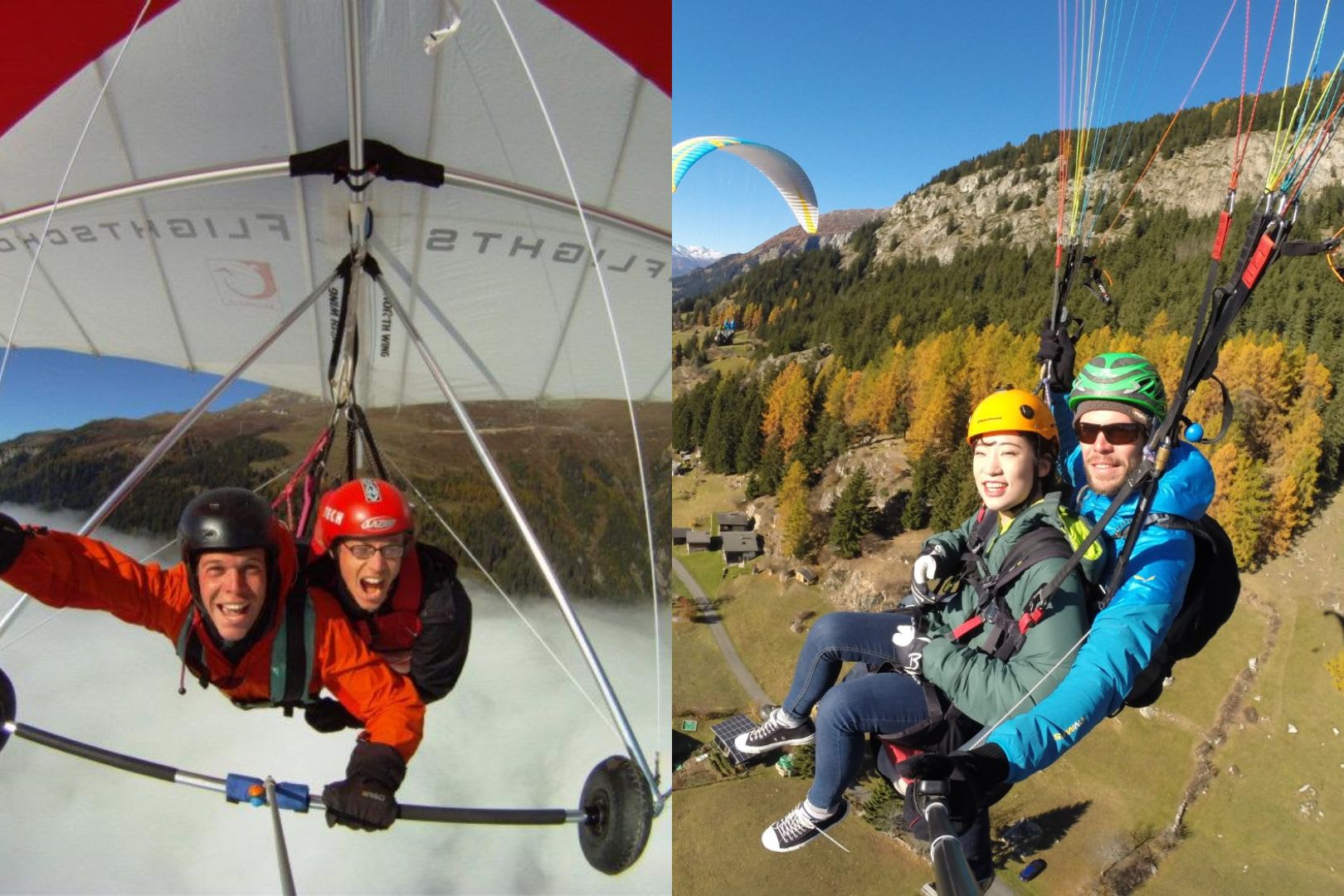
Another difference between hang gliding and paragliding is the position the pilot has while flying.
If you choose the hang gliding, you will fly in a horizontal position, the pilot is lying horizontally, parallel to the wing. This special position allows the pilot to control the direction using only their body. Due to the position you have on a hang glider, you will be able to have longer flight times, but it needs a wind of at least 40 km/h.
While paragliding, you will be sitting upright in a harness, as if you were on a chair. This can be more or less comfortable, depending on your paraglide (tandem paragliding being the most comfortable one). To control the paraglide, you will be using your hands to pull (gently) on the commands. Concerning the speed, you only need a wind of at least 20 km/h to take off.
Hang gliding vs. paragliding weight
Just like the size of the wings, the weights of hang gliders and paragliders vary. A paraglider weighs around 22 and 44 lbs (10 and 20 kg). The paraglider used for tandem paragliding flights is usually heavier than those used when flying solo.
Hang gliding weighs more than three times that weight (not including additional equipment such as a harness). A recreational hang glider can typically weigh between forty and ninety lbs (18 and 41 kilograms). Because advanced materials are used, hang gliders intended for professional or competitive use may weigh between 40 and 60 lbs (18 and 27 kilograms), making them lighter.
What is the maximum weight a hang glide and a paraglide can handle?
The maximum weight that a tandem paraglider can support is generally 507 lbs (230 kg), it includes both passenger and the instructor: as a result, 242 lbs (110 kg) is the maximum weight for a passenger. This rule, however, may change based on the weight of the instructor, the flying circumstances, and the individual's level of fitness.
With a hang glide, it's almost the same, it will depend on the wind conditions and the instructors.
Hang gliding vs. paragliding thrill factor
Due to its aerodynamic wing and the position of the pilot, the hang glide allows you to reach a great speed. Traveling at a speed going up to 80 miles per hour (128 km/h), hang gliders let you glide faster than it is possible using a paraglide. With a paraglider, you can reach a maximum speed of 46 miles per hour (75 km/h).
In terms of acrobatics, you can’t do many tricks with a paraglide: paragliding is more of a leisure type of flight while hang gliding offers more opportunities for aerial acrobatics and tricks.
Hang gliding vs. paragliding training
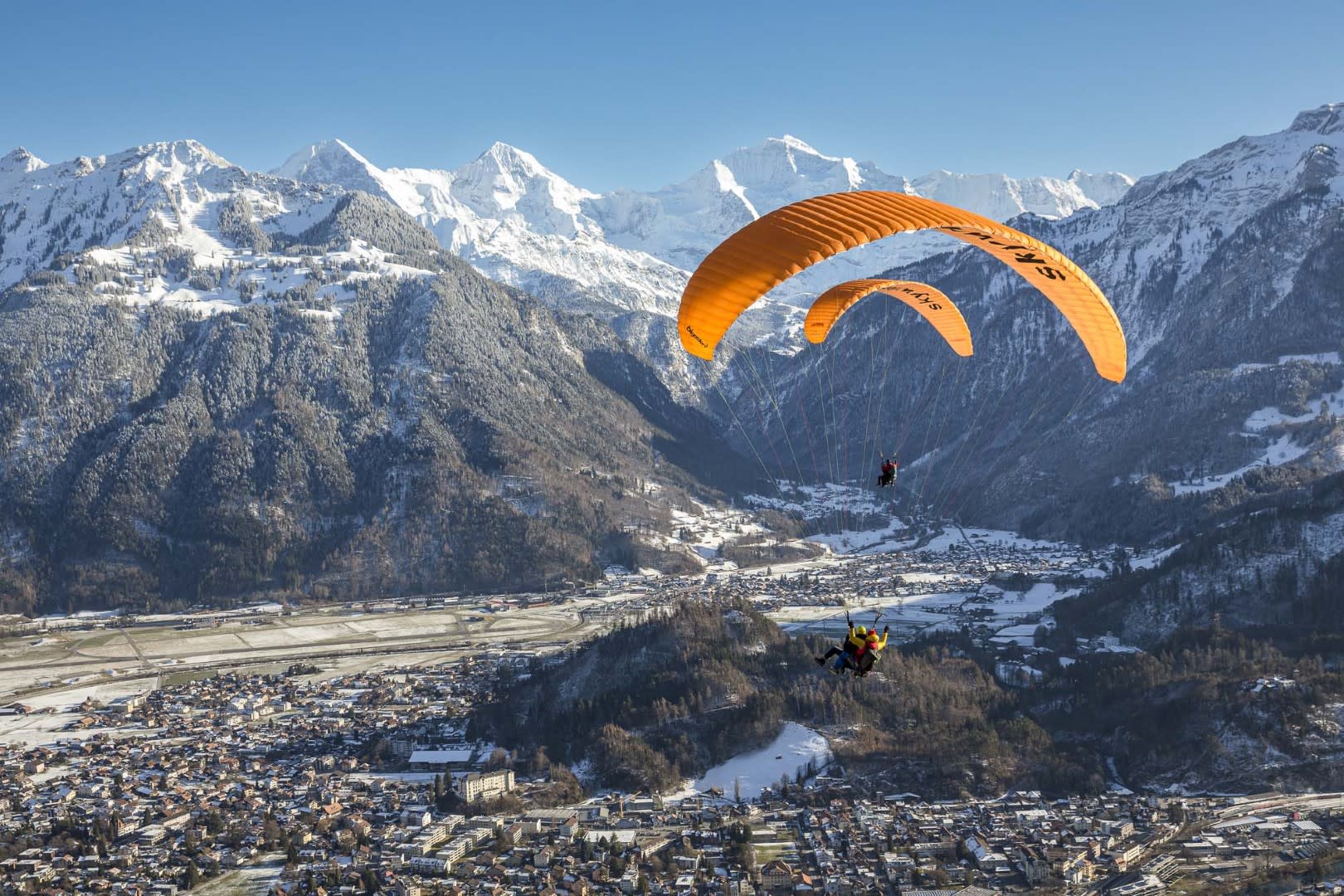
You really want to take to the skies and fly like a bird? You have the possibility to take a paragliding initiation training course like in Annecy for example, which allows you to learn the basics of this sport during an individualized teaching. After this 5 days course, you will be able to take your first solo paragliding flights!
Concerning the hang gliding, you can do your first solo flight after a 4 to 5 days training. If you are based in England, you can start the BHPA Elementary pilot course which lasts 5 days. During this training you will learn how to hang glide (including theory and practice).
In both cases, the equipement and clothing will be provided.
Hang gliding vs. paragliding availability
Hang gliding and paragliding are activities that are both accessible around the world. However, paragliding is more common then hang gliding which is more slightly more niche.
Paragliding activities are appreciated because there are many amazing spots in Europe and it attracts people to see beautiful landscapes from the skies.
Hang gliding vs. paragliding safety
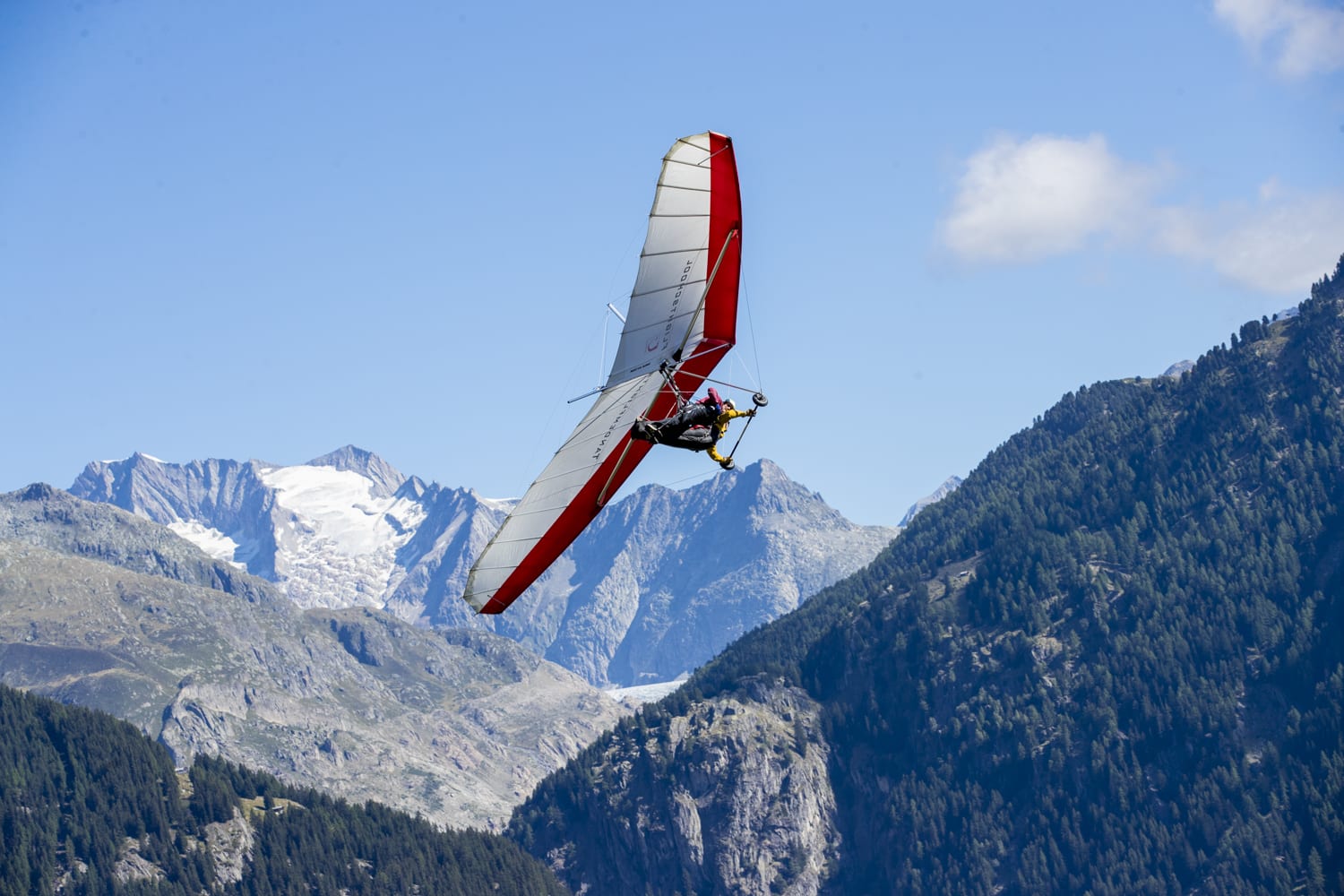
Once in the air, most people are surprised by how comfortable they feel. Hang gliders are incredibly smooth to fly, and the pilot has a lot of control over the craft. The instructors can maneuver the glider in ways that will astound you, but they will only do so upon your request. People who think they'll be too nervous to fly frequently want to go up and do it again after they land because the experience is far more thrilling than terrifying. For hang gliders, the very few accidents that happen are due to high speed, whereas for paragliders, it is due to the lack of thermal winds. However, accidents are extremely rare!
Did you know that paragliding is fifteen times safer than driving and about as safe as hiking or running? You will have a reserve parachute with you when paragliding, this provides a powerful extra protection... Moreover, during tandem paragliding, instructors are highly skilled and knowledgeable about how to reduce risks for their passengers during these stages.
Hang gliding vs. paragliding price
There is an important difference between the prices of a paraglider and a hang glide when it comes to comparing their kite prices. Hang gliding kites are more expensive, their wings cost around €4500. And for paraglides, the wing costs an average of €2500.
But if you’re not looking to buy the gliders, you will find many flying schools that allow you to try these sports at a lower cost. A hang gliding kite activity will cost from €50 to €250 depending on the length of the flight and the location. But if you would rather paraglide, then it will cost you from €40 to about €290.
Destinations to try both paragliding and hang gliding
Looking for a spot where you can try hang gliding and paragliding? We've gathered some great locations to experience both sports.
Brig, Switzerland
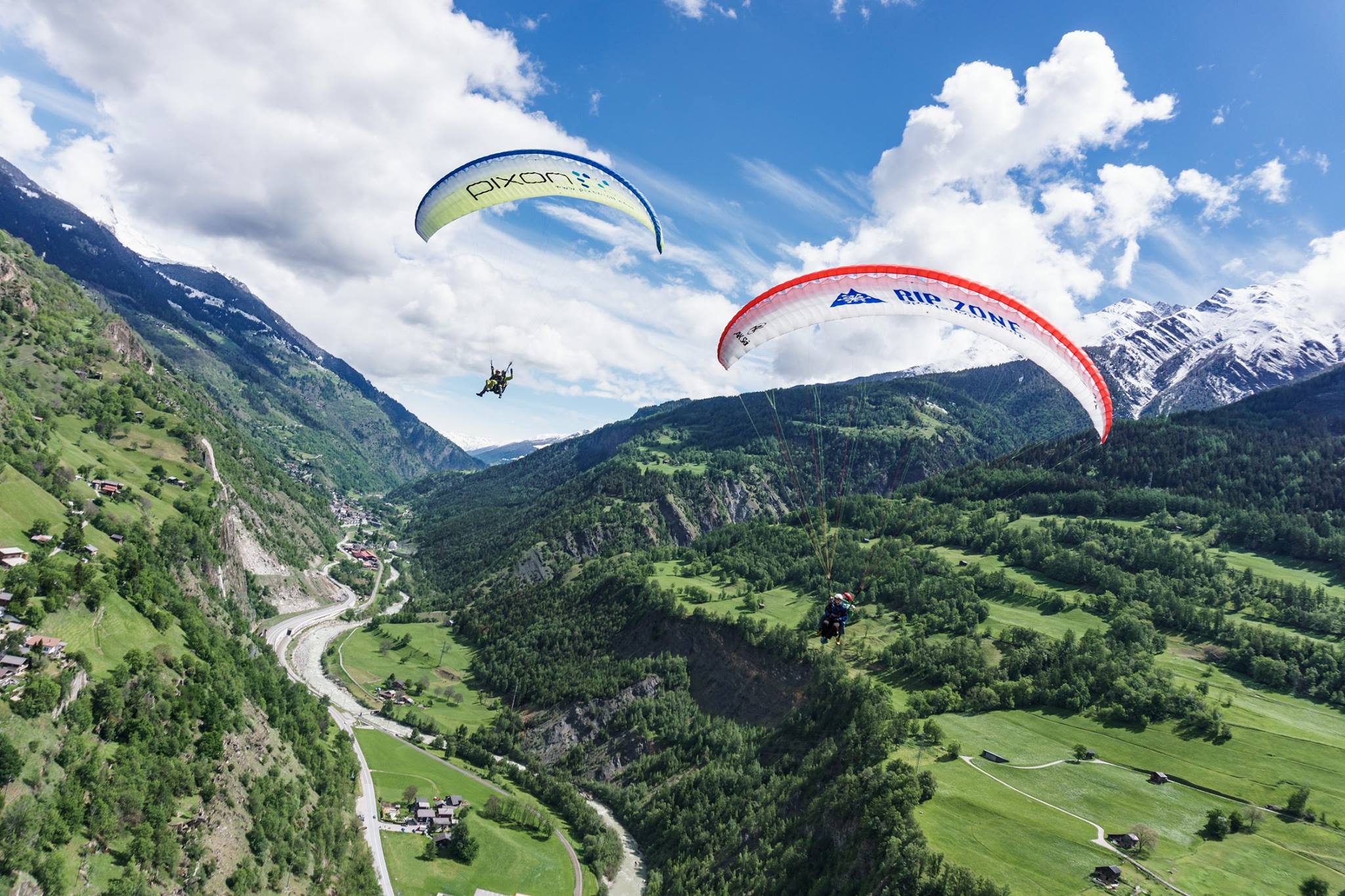
Because of the favorable winds and thermals in the Aletsch region, you will be able to soar higher into the sky for extended periods of time. A tandem flight from Belalp will give you an amazing view of the Matterhorn as well as the Aletsch glacier and the Simplon as you soar further down the valley! Finally landing at Bitsch, close to Brig, you will have flown over the Massa Gorge.
Whether you choose hang gliding in Brig or paragliding, you will have the opportunity to opt for different types of flights. Concerning the paragliding experience in Brig, you can choose from 15 minute discovery flight to deluxe flight. In both cases, plan on a 2-hour fun time adventure.
Annecy, France
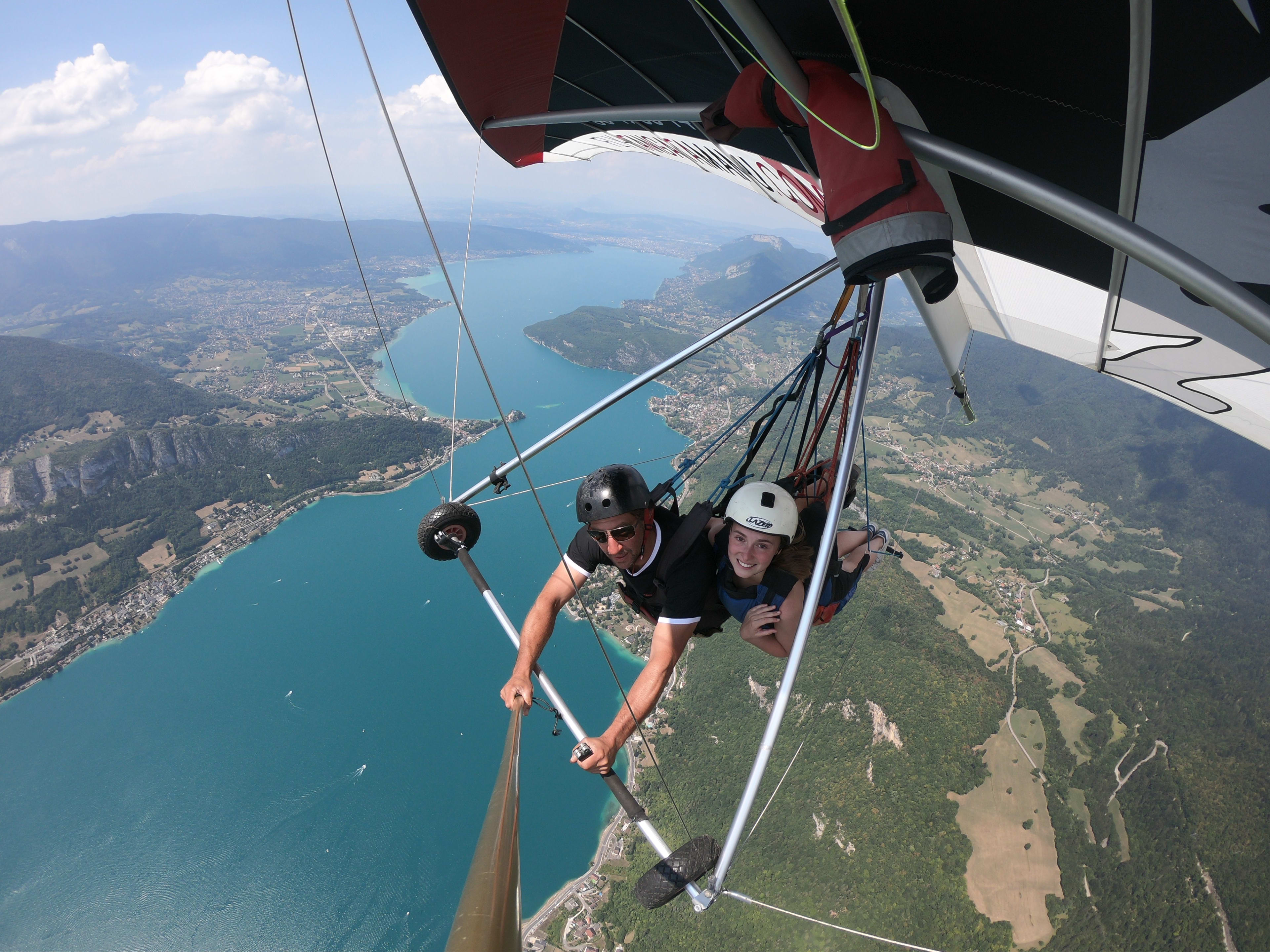
Discover the Annecy Lake from a different perspective and admire the surrounding mountains, such as Semnoz and La Tournette, from the air. From the hang-glider, enjoy exceptional panoramic views during a silent flight that lets you blend in with the scenery of Haute-Savoie with just the right dose of adrenaline! You'll be lying down, which makes the experience much closer to that of flying a bird. Of course, the duration of the hangliding flight in Annecy will also depend on the day's weather conditions, your weight and the flight package you choose. The flight can last from 10 to 40 minutes.
If you choose the paragliding in Annecy, you can select between the discovery flight (10 to 20 minutes),the up-draft flight (20 to 30 minutes) and the prestige flight (30 to 40 minutes).
Lisboa, Portugal
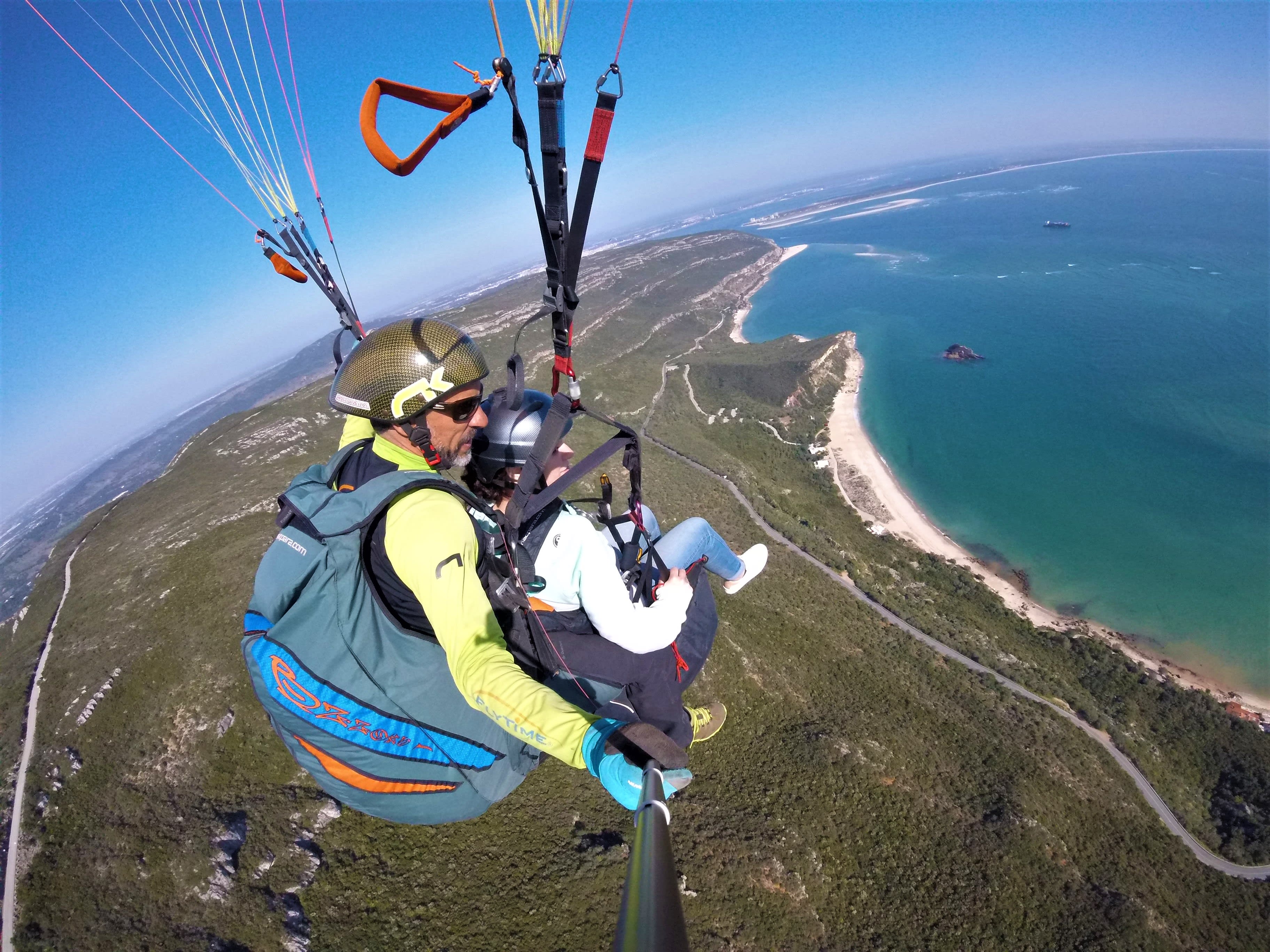
Take to the skies of Portugal and soar like a bird. You can choose to fly in tandem with a paraglider or enjoy hang-gliding. These flying spots offer a unique location that is only 25 kilometers from the heart of Lisbon.
The 10,521-hectare Serra da Arrábida, which has a peak elevation of 501 meters, has been a nature park since 1976. It is home to numerous rare species, magnificent caves in addition to stunning beaches and breathtaking scenery : imagine how delighted you will be during your paragliding flight in Lisboa!
Keep flying...
Ready to conquer the sky?
Now that you know all about the difference between hang gliding and paragliding, it’s time to take action! Check out all of our paragliding activities in the world. But if you’re leaning more towards hang gliding, here are our hang gliding activities spread all around the world.
Whichever you choose (how about both?) we know you’ll have a blast up there in the air! Enjoy!
And if you want to keep your head in the clouds, why don't you try the skydiving activity? You can jump from crazy spots! Check them out in our article on the craziest bungee jumps in the world.
